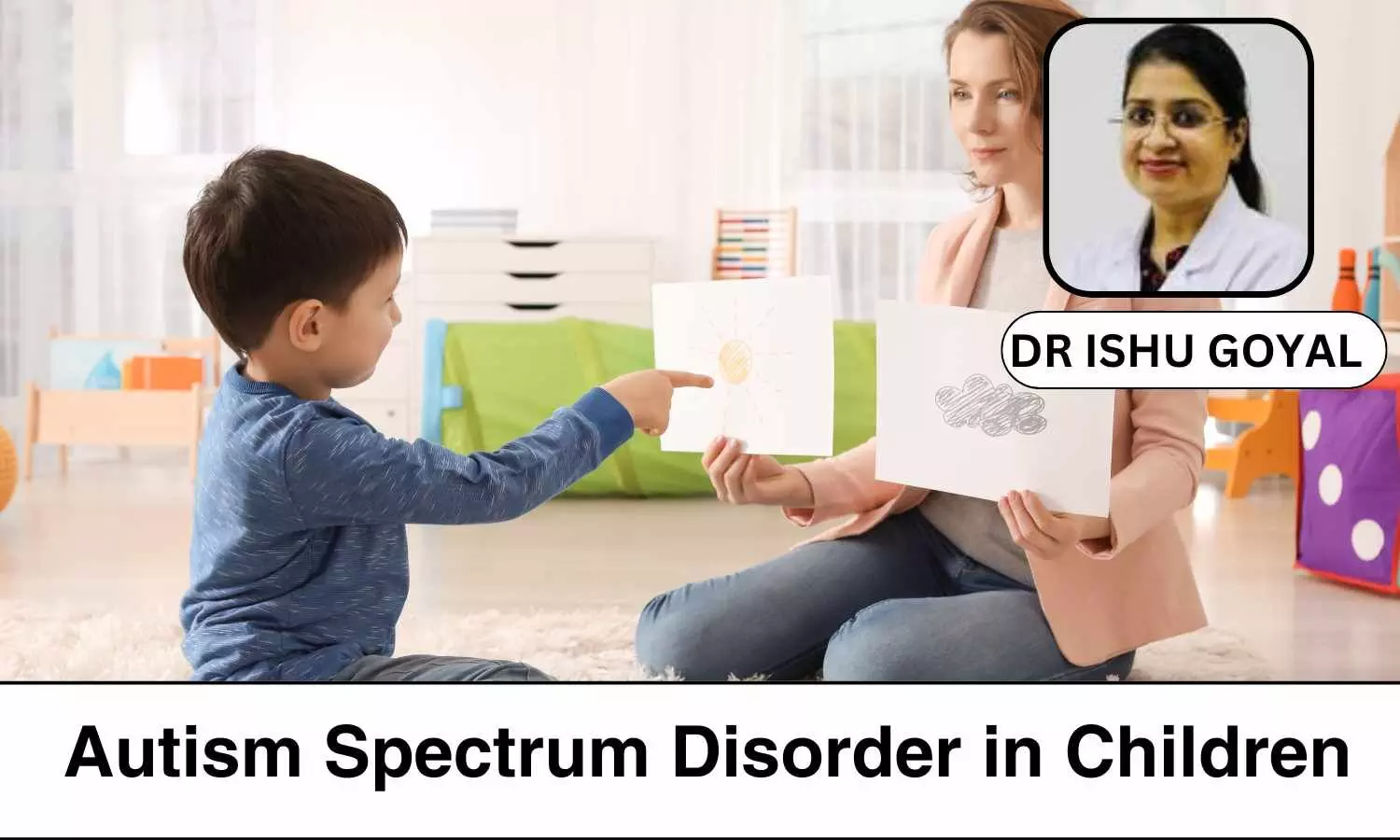Recognizing and Addressing Autism Spectrum Disorder in Children - Dr Ishu Goyal

Autistic spectrum disorder is a group of developmental disabilities in which children may behave, communicate, interact and learn in ways that are different from most other children. The abilities of children with disabilities may vary significantly, and the severity of symptoms may range from good conversational skills to no verbal communication at all.
Usually, ASD is not detected in the first year of life, because children with ASD attain their motor milestones at the usual time. It is only when the social milestones lag behind, that the parents realize that there is something odd about the child.
These children have delayed social and language milestones which hinder with mixing up with their peers and communication of their needs. They require extensive occupational and cognitive therapies to make them self -dependant.
Hence, it is important to recognise the problem early, so that adequate therapies can be started before severe regression happens. Also, neuroplasticity is maximum in early years of life. Hence, chances of improvement in language and social functions is maximum when the therapy is started early.
It would not be wrong to say that autism is a rapidly growing developmental disability in India. According to a report published in Indian Journal of Paediatrics in 2021, 1 out of 68 children have autism. Males are more frequently affected, with a 3:1 male to female ratio.
Some of the predisposing factors to development of autism in children are maternal diseases like hypothyroidism, diabetes or exposure to poisonous substances like mercury, lead etc.
There are certain early indicators that may point towards ASD in preschool children. In infancy, lack of response to calling out to name, poor eye contact, lack of gestural communication, significant speech delay like no cooing/ babbling by 1 year of age, are potential indicators of development of autism.
Numerous studies have documented a deficit in joint attention skills of children with ASD. For example, by one year of age, most children are able to look in the direction that the parent is pointing at, then they look back at the parent and usually smile or give some expression. Children with ASD may not do that which the parents may perceive as difficulty in hearing. They may also have repetitive and stereotypic movements like flapping of hands.
In toddlers, the language disability persists, so the child may be singing the same nursery rhyme repetitively but would not speak when spoken to. They may not be able to use spoken language to make the parent understand what they want.
This may lead to frequent idiosynchratic, unconventional or inappropriate behaviours to communicate, such as self-injurious behaviour, aggression or tantrums. Children with ASD may also show significant deficits in symbolic or make-believe play, like using a doll to play as a family game, and also limited abilities to use the object functionally.
For example, they may not play with a car using it as a car and may just throw it around for fun. They may also show extreme resistance to change of environment and stimulus sensitivity.
For e.g., the feel of shoes may be so uncomfortable for the kids that they may totally refuse to wear them. Approximately 25% of children that are later diagnosed to have autism may even show some regression in the form of loss of language function that they may have gained earlier.
These pre-linguistic behaviours may be important early indicators of ASD. Whenever these features are identified, formal assessment by a neurologist is warranted, where they use various certified batteries of tests to determine if the child lies in the spectrum of autism.


